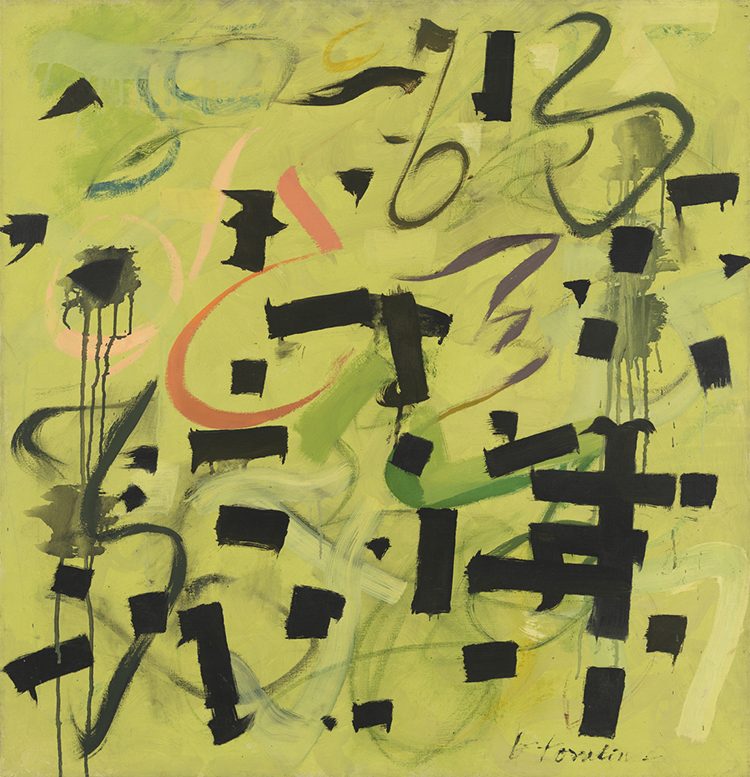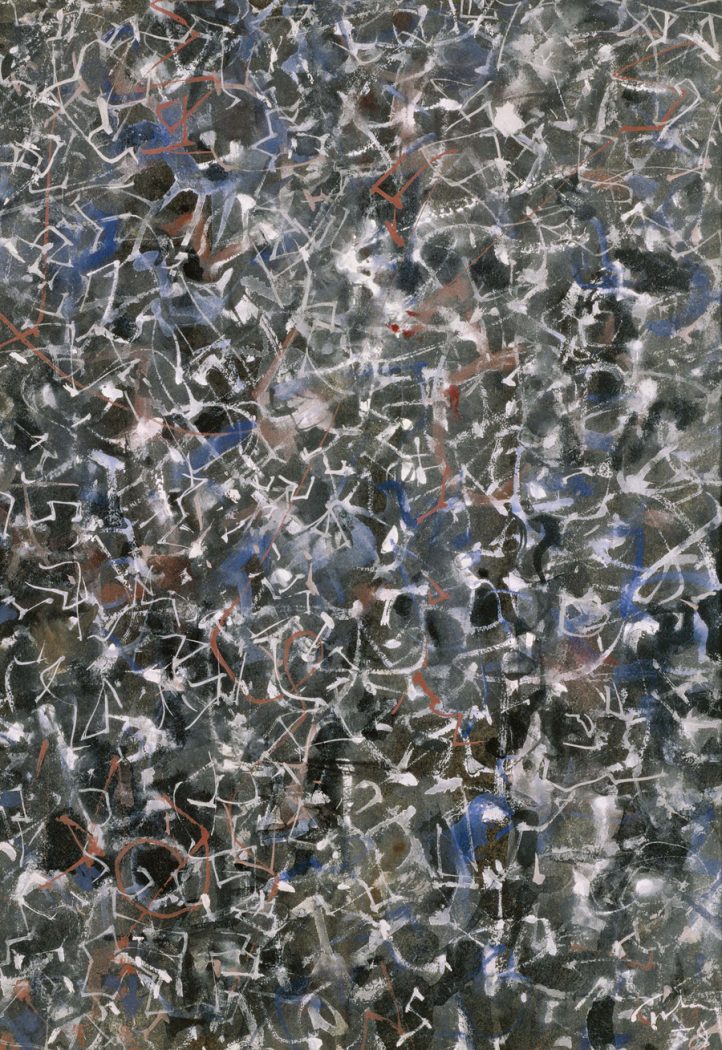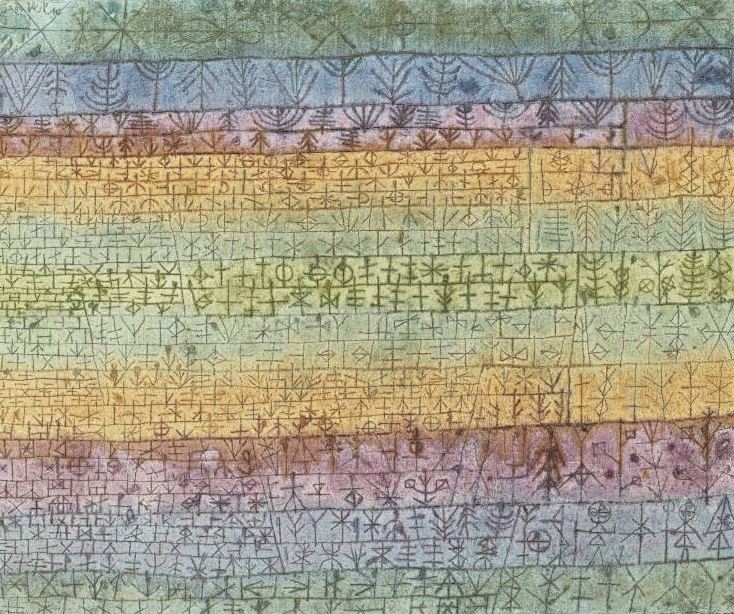
Bradley Walker Tomlin, Number 12–1949, 1949, Oil on canvas, 32 1/4 x 31 1/4 in., Whitney Museum of American Art, New York, Gift of Abby and B. H. Friedman in honor of John I. H. Baur
Just a few years before he painted this luminous composition, Bradley Walker Tomlin met Adolph Gottlieb and other leading Abstract Expressionists. The close relationships he forged with them influenced his shift from a Cubist style toward a more calligraphic, expressive language exemplified by Number 12. For this canvas, painted while Tomlin was sharing a studio with Robert Motherwell, he used the method of automatic writing to arrive at gestural calligraphic forms that float against a mystical yellow background.
Phillips Collection founder Duncan Phillips admired Tomlin’s work precisely because of its “interplay of an ordered formalism and spontaneous, expressive gesture.” Paul Klee’s art strove to marry the same principles. Number 12 combines curved arabesques with flat, ribbon-like forms; the latter became a hallmark of his mature style, as seen in Number 9, on view nearby in the Ten Americans exhibition.
This work is on view in Ten Americans: After Paul Klee through May 6, 2018.


